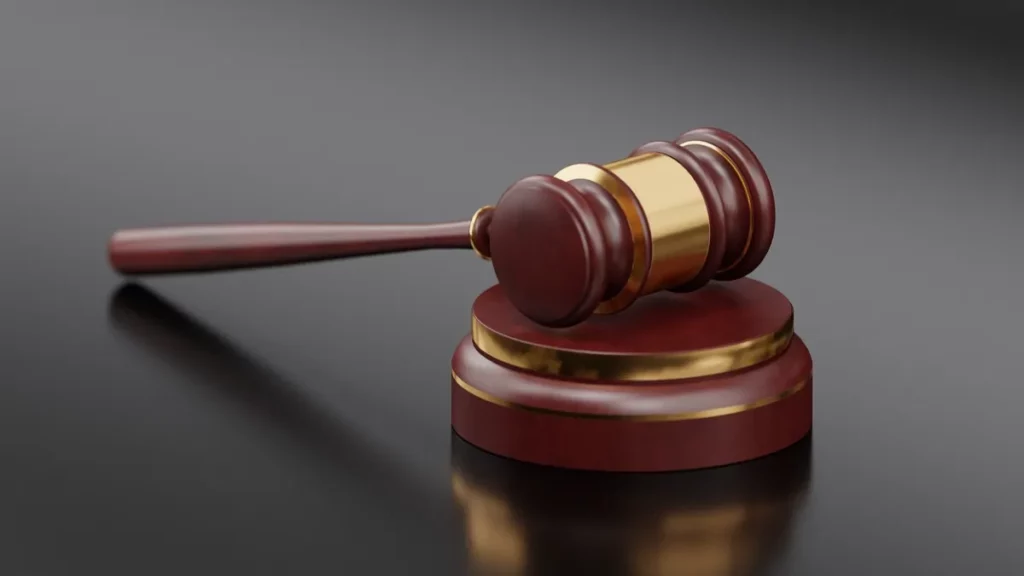
This site is reader-supported. We may earn a small commission if you make a purchase from one of our partners.
When it comes to conflict resolution and legal disputes, the cease and desist letter holds a unique and often misunderstood position. It arrives like a shot across the bow, commanding attention and demanding action,
But what precisely is its legal standing? Is a cease and desist letter a bona fide legal document, or is it merely a strongly worded letter that relies on the persuasive power of words?
In this blog post, we’ll deep dive into the nature and significance of cease and desist letters, their legal status, and what you can do to help get the results you need. In addition, we’ll cover what you should do if you are ever on the receiving end of such a letter.
Let’s get started.
What is a Cease and Desist Letter?

A cease and desist letter, often referred to as a “C&D letter,” is a document that serves as a formal notice to an individual or entity, demanding that they immediately cease a specific activity or behavior.
These letters are typically sent by individuals, businesses, or their legal representatives and are a common first step in addressing various legal issues, ranging from intellectual property disputes to harassment or defamation claims.
The primary purpose of a cease and desist letter is to notify the recipient of the alleged wrongdoing and to request that they stop the offending behavior.
The letter typically outlines the specific actions that are considered unlawful or harmful, provides evidence or reasoning behind the claims, and sets a clear deadline for compliance. It will also include a threat that the sender will pursue legal action in the event of non-compliance.
What Types of Disputes Can a Cease and Desist Letter Help With?
Cease and desist letters are versatile tools, and they can address a wide range of issues, including:
Intellectual Property Infringement:
Infringement cease and desist letters are often used to protect trademarks, copyrights, and patents (i.e.. copyright infringement or trademark infringement). They demand that the alleged infringer stop using the protected material without permission.
Harassment or Defamation
In cases of online harassment, cyberbullying, or false statements, harassment cease and desist letters can be sent to demand the removal of harmful content and the cessation of further damaging actions.
Contract Disputes
Parties in contractual disputes may send a contract cease and desist letter to request that the other party stop actions that breach the terms of their agreement or face legal repercussions.
Debt Collectors
If you are being harassed by a debt collector, you can assert your rights under the Fair Debt Collection Practices Act (FDCPA) using a strongly worded debt collector cease and desist letter.
Components of a Cease and Desist Letter
Cease and desist letters have a fairly standard structure that breaks down into three parts.
The Header
First, there’s the header, which includes the sender’s contact information (usually a law firm or individual) and the recipient’s details. This header is essential for clarity and to make sure the letter reaches the right person.
The Details
Next, there’s the detail and information, which sets the tone and purpose of the letter. It explains what behavior or actions the sender finds problematic and why. Then comes the demand section, where the sender clearly states what they want the recipient to stop doing. This part can be pretty straightforward and specific, outlining the actions that need to cease and often setting a deadline for compliance.
The Consequences
Finally, there’s usually a consequences section, which explains what might happen if the recipient doesn’t comply. This can include legal action or other measures to protect the sender’s rights or interests.
Is a Cease and Desist Letter a Legal Document?

No, a cease and desist letter is not a legal document like a court order or a contract. Let’s keep it simple and break it down.
Imagine you’re in a disagreement with someone or a company, and you want them to stop doing something you think is wrong. So, you send them a cease and desist letter. It’s like a formal, written way of saying, “Hey, what you’re doing isn’t okay, and I want you to cut it out.”
Now, here’s the key difference: legal documents like court orders come from judges and courts, and they come with legitimate legal consequences. A cease and desist letter, on the other hand, comes from regular people, lawyers, or businesses. It’s more like a warning letter with a threat of future legal action.
In a nutshell, a cease and desist letter is a bit like a legal warning shot, but it’s not the same as an official legal document. It’s a way for people to say, “Hey, let’s fix this before it gets too legal.” So, keep it on your radar and consider finding a solution if you ever receive one.
However, there is one type of cease and desist that is legally binding. This is called a cease and desist order.
What is a Cease and Desist Order?
A cease and desist order is a formal legal directive issued by a recognized authority, like a court or a government agency, to stop a specific activity or behavior immediately. It carries the full weight of the law and is legally binding.
When you receive a cease and desist order, you must comply promptly, or you could face legal consequences, such as fines or legal actions. It’s a strong, official tool used to enforce the law and protect people’s rights.
This differs from a cease and desist letter sent by an individual, a business, or their legal representative to address a perceived issue. This is more of a request without any legal weight behind it.
In a nutshell, the key difference is that a cease and desist order is a legal command, while a cease and desist letter is a formal request. Understanding this distinction is crucial when dealing with legal matters to know how seriously to take the communication and what actions are legally required.
How to Draft a Cease and Desist Letter

There are two main ways you can get a cease and desist letter:
Writing It Yourself
Drafting a cease and desist letter without legal assistance is possible for many straightforward issues.
Start by defining the problem, maintaining a respectful tone, and clearly articulating your demands with a reasonable deadline. Back your claims with evidence, and specify potential consequences if the recipient doesn’t comply.
When you are ready to send, use a reliable delivery method, such as certified mail to ensure the letter reaches its destination.
If you plan on writing the letter yourself, we strongly recommend using a service like Law Depot. Their online drafting tool make it quick and easy to get a professional letter in a matter of minutes.
Hiring A Lawyer
Opting to have a lawyer draft a cease and desist letter on your behalf can provide several advantages. Legal professionals bring expertise in crafting precise and legally sound letters tailored to your specific situation. They can navigate complex legal nuances, ensuring your letter carries maximum weight and credibility. Lawyers also understand the appropriate tone and language to use, striking a balance between firmness and professionalism.
In addition, involving an attorney signals your commitment to resolving the issue, potentially deterring the recipient from further unlawful actions. It can also demonstrate your willingness to pursue legal action if necessary.
While this service comes at a cost, it often pays off in the long run by helping you achieve a more favorable outcome and preventing costly legal battles down the line.
What to Do if You Receive a Cease and Desist Letter

Receiving a cease and desist letter can be an unsettling experience, but it’s essential to respond thoughtfully and responsibly. Here’s a step-by-step guide on what to do:
Read and Understand the Letter:
Begin by carefully reading the cease and desist letter to grasp the sender’s concerns, demands, and the legal basis for their claims. Take note of the deadline for compliance.
Document Everything
Maintain a record of all correspondence and actions taken, as it may be useful in any potential legal proceedings.
Seek Legal Advice
If you’re unsure about the validity of the claims or how to respond, consider consulting an attorney. They can help you assess the situation, your rights, and potential legal obligations. They can even help draft a professional response.
Respond Promptly and Professionally
Address the concerns raised in the letter in a clear and concise manner. Maintain a professional and respectful tone, even if you disagree with the claims. It’s often in your best interest to seek a resolution rather than escalating the conflict.
Negotiate if Possible
If the claims are valid, consider negotiating a resolution that satisfies both parties. This can save time and legal costs. A lawyer can assist with getting the best outcome in this situation and we strongly recommend getting legal as
Remember that ignoring a cease and desist letter can have legal consequences, and a well-informed, measured response is often the best course of action to protect your rights and interests.
Conclusion
To wrap things up, it’s important to remember that a cease and desist letter is not quite the same as a formal legal document, like a court order. A cease and desist letter is more like a written warning or a request from one party to another. It can be the start of resolving a problem without going to court.
On the other hand, legal documents, like cease and desist orders, come from courts or government authorities. They’re serious commands backed by the law, and you must follow them. Ignoring them can lead to legal trouble.
So, understanding the difference between a cease and desist letter and a formal legal document is essential.
Do you need help crafting a cease and desist letter? Consider Law Depot. Their online tool helps you produce a letter that is both professional and powerful. Try it today!

Wes Talisman is a freelance journalist who helps answer common legal questions for everyday people. He’s never won a Pulitzer Prize, but he does write a stellar Cease and Desist letter.